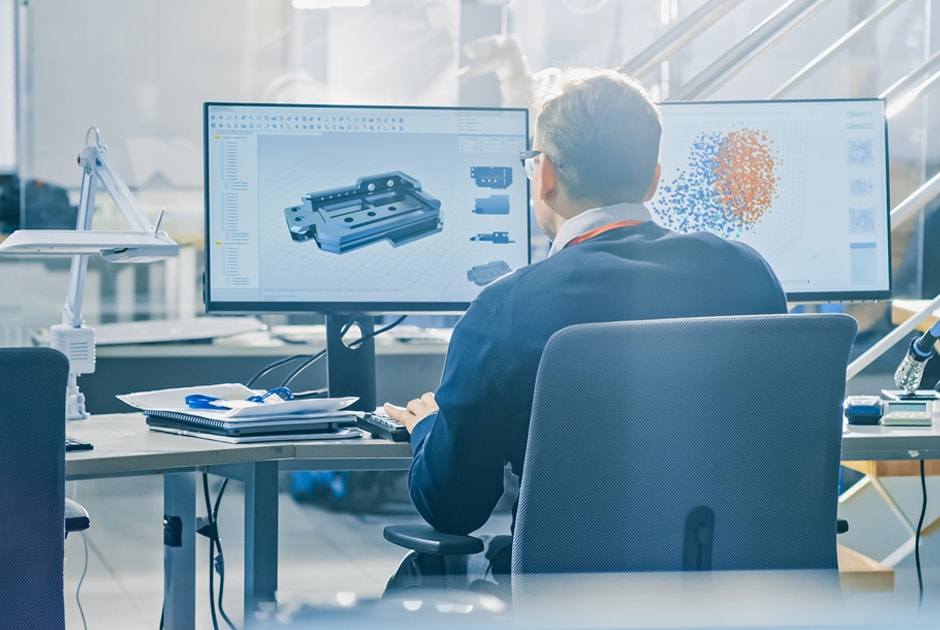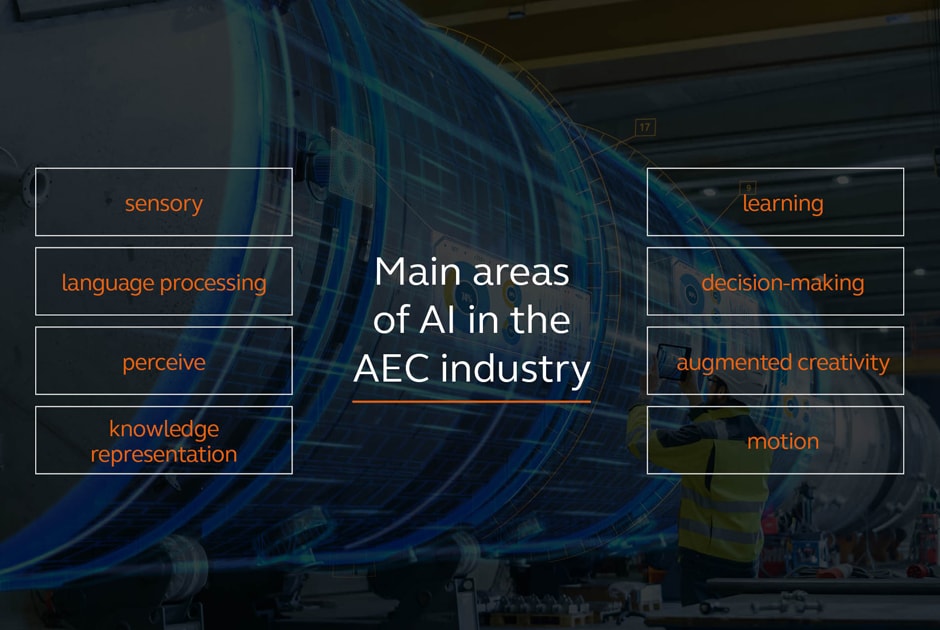Artificial Intelligence (AI) has disrupted many industries but architecture, engineering, and construction (AEC) lag behind other sections of the economy. New technological advancements and applications of AI make it clear that disruption is finally knocking at the door of our industry as well. How can we prepare for the impending changes? And even more importantly, how can we take advantage of the tremendous opportunities that will arise?
As the world shifts towards a more digitized future, the data economy is thriving, and many companies are starting to see AI as an important means of creating competitive advantage. Through applications of AI, companies of different backgrounds in various industries are finding evermore effective solutions, meeting their demands at a faster pace, and tackling larger and more impactful challenges every day. Together with increased connectivity and automation, AI is a fundamental component of the Fourth Industrial Revolution (Industry 4.0). Up until now, the AEC industry has had a slow response to these developments, but now, we are standing at the brink of disruption and we predict significant changes will happen to our industry in the near future.

Climate change, population growth, urbanization and globalization are megatrends which are creating different societal needs related to housing, infrastructure, transportation, and construction. Furthermore, 2020 – with the pandemic, economic turmoil, and societal unrest - has increased the demand for more effective and faster solutions societal challenges. A paradigm shift is required to successfully face the future.
Despite the significant potential to boost services within the AEC industry using existing technology within data analytics and artificial intelligence, the adaptation rate in the industry has been rather low. This could be partly due to fragmentation of our industry, which makes large collaborative research and development projects difficult, which further slows down innovation.

We successfully started to explore AI capabilities in the AEC industry, and we have delivered numerous projects that focus on data analytics to our clients, with cutting-edge analytics solutions. Arcadis would like to share its AI expertise with the industry, with the hope that this will be a step in the direction towards a more collaborative, digitized, and innovative industry. We believe that by adapting to the digital transformation, we all can deliver better, faster, and more effective solutions to our clients – and consequently, improve the quality of life for people all over the globe.
We came together and worked collaboratively on a joint document: “Artificial Intelligence in the AEC Industry – a Code of Practice”, which is a comprehensive report about the current state of AI in our industry, the future opportunities and trends it brings, and examples of work we have conducted together with our clients. The main areas of AI in the AEC industry include: (1) Sensory, (2) Language Processing, (3) Perceive, (4) Knowledge Representation, (5) Learning, (6) Decision-making, (7) Augmented Creativity, and (8) Motion. These branches of AI can be applied to a variety of client challenges, and in our Code of Practice we illustrate how AI can be used in all our solutions and market sectors.

The Artificial Intelligence in the AEC Industry – A Code of Practice is the result of global collaboration between regions and sectors, and we are proud to utilize the knowledge of several of our industry experts, and to share this with the industry. We hope that this report can inspire other companies in the industry to also take the step towards a more digitized future. We are excited to face the challenges of the future, and further investigate how we, as an industry, can revolutionize the nature of architecture, engineering, and construction.






